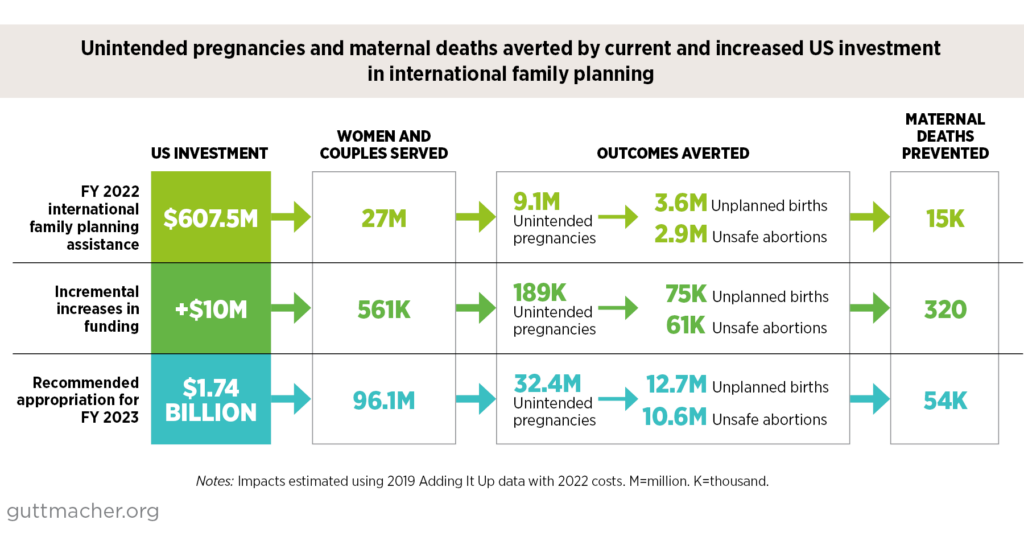
Are you thinking about writing an opinion piece or a letter to the editor of a local, state, or national newspaper? Great idea! Here are some facts and figures to help you support your arguments, all with hyperlinks to their sources. Make sure to include hyperlinks in your own piece that you submit—it makes fact checking much easier for editors and makes you look like the expert you likely are!
Note: Many of these are taken verbatim from published reports, so paraphrasing is a good idea if possible, keeping the facts unchanged, of course.
Population
The world is growing by 1 billion people every dozen years.
The latest projections by the United Nations suggest that the world’s population could grow to around 8.5 billion in 2030 and 9.7 billion in 2050; it is projected to reach a peak of around 10.4 billion people during the 2080s and to remain at that level until 2100.
China’s population peaked in 2023, and India’s population became the largest in the world.
The 46 least developed countries (LDCs) are among the world’s fastest-growing. Many are projected to double in population between 2022 and 2050, putting additional pressure on resources and posing challenges to the achievement of the Sustainable Development Goals (SDGs).
Between 2022 and 2050, the population of sub-Saharan Africa is expected to almost double, surpassing 2 billion inhabitants by the late 2040s.
The U.S. population is projected to reach a high of nearly 370 million in 2080 before edging downward to 366 million in 2100. At the time of the 2020 Census, it was 331,449,281.
Fertility & Family Planning
Two-thirds of the global population lives in a country or area where lifetime fertility is below 2.1 births per woman.
In 2021, the average fertility of the world’s population stood at 2.3 births per woman over a lifetime, having fallen from about 5 births per woman in 1950.
There are 257 million women worldwide who don’t want to become pregnant but aren’t using modern contraception; 218 million of them are in developing countries.
U.S. funding for international family planning/reproductive health has been steady at around $600 million a year for a decade.
The U.S. annual “fair share” for international family planning is $1.74 billion—nearly three times our current appropriations.
The following infographic from the Guttmacher Institute illustrates the impact of U.S. international family planning assistance:
According to the CDC, the U.S. total fertility rate (the number of births an average woman would have over her lifetime if today’s age-specific fertility rates remained unchanged) in 2022 was 1.665.
Environment
During 2020, the world’s population increased by 81 million people, adding to the demand for food, housing, infrastructure, services and decent work, and increasing the pressure on the environment.
One million plants and animals are threatened with extinction.
The Living Planet Index shows an average 69% decline in the relative abundance of monitored wildlife populations around the world between 1970 and 2018.
Every year we lose roughly 10 million hectares of forests — an area about the size of Portugal.
Appropriation of land for food production is the leading driver of biodiversity loss.
Food production currently takes up 50% of habitable land worldwide and accounts for 70% of freshwater withdrawals.
The global food system is responsible for between one-fifth and one-third of total greenhouse gas (GHG) emissions, taking into account emissions from agriculture and from food storage, transport, packaging, processing, and distribution.
There are three components that make up the global emissions projections by the IPCC (the Intergovernmental Panel on Climate Change): population, affluence, and technology. Yet, population is never mentioned by the IPCC when discussing mitigation strategies.
The IPCC’s Sixth Assessment Report (2022) states that globally, Gross Domestic Product (GDP) per capita and population growth remained the strongest drivers of CO2 emissions from fossil fuel combustion in the last decade.
According to the UN, 10% of the global population lives in countries with high or critical water stress. Between 2.2 and 3.2 billion people lived under water stress for at least 1 month per year in 2010, corresponding to 32% and 46% of the world’s population at the time.
An estimate from 2010 shows that following a lower population path could make up 16–29% of the emissions reductions necessary by 2050 to avoid global warming of more than 2° C; lower population growth could make up 37–41% of emissions reductions necessary by end of century.
According to Project Drawdown, slowing population growth by removing barriers to family planning and education would reduce CO2-equivalent emissions by 68.9 gigatons by 2050, making it the third most impactful climate action for limiting global warming to 2°C.
Health & Human Rights
In 2020, an estimated 287,000 women globally died from a maternal cause, equivalent to almost 800 maternal deaths every day, and approximately one every two minutes.
Sub-Saharan Africa alone accounted for approximately 70% of global maternal deaths in 2020, followed by Central and Southern Asia, which accounted for almost 17%.
Unsafe abortion is one of the leading causes of maternal death globally—an estimated 4.7–13.2% of maternal deaths each year can be attributed to unsafe abortion.
339.2 million people have been identified globally as being in humanitarian need. 8 of the 10 neediest countries have high fertility rates.
Between 702 and 828 million people were affected by hunger in 2021. Around 2.3 billion people in the world were moderately or severely food insecure in 2021, and 11.7% of the global population faced food insecurity at severe levels.
Globally in 2020, an estimated 22% of children under five years of age were stunted, 6.7% were wasted, and 5.7% were overweight. Children in rural settings and poorer households, whose mothers received no formal education, were more vulnerable to stunting and wasting.
In 2022, World Bank estimates show:
- 333 million children living in extreme poverty ($2.15)
- 829 million children living below $3.65
- 43 billion children living below $6.85
16% of all children in the United States — 11.6 million kids total — are living in poverty.



